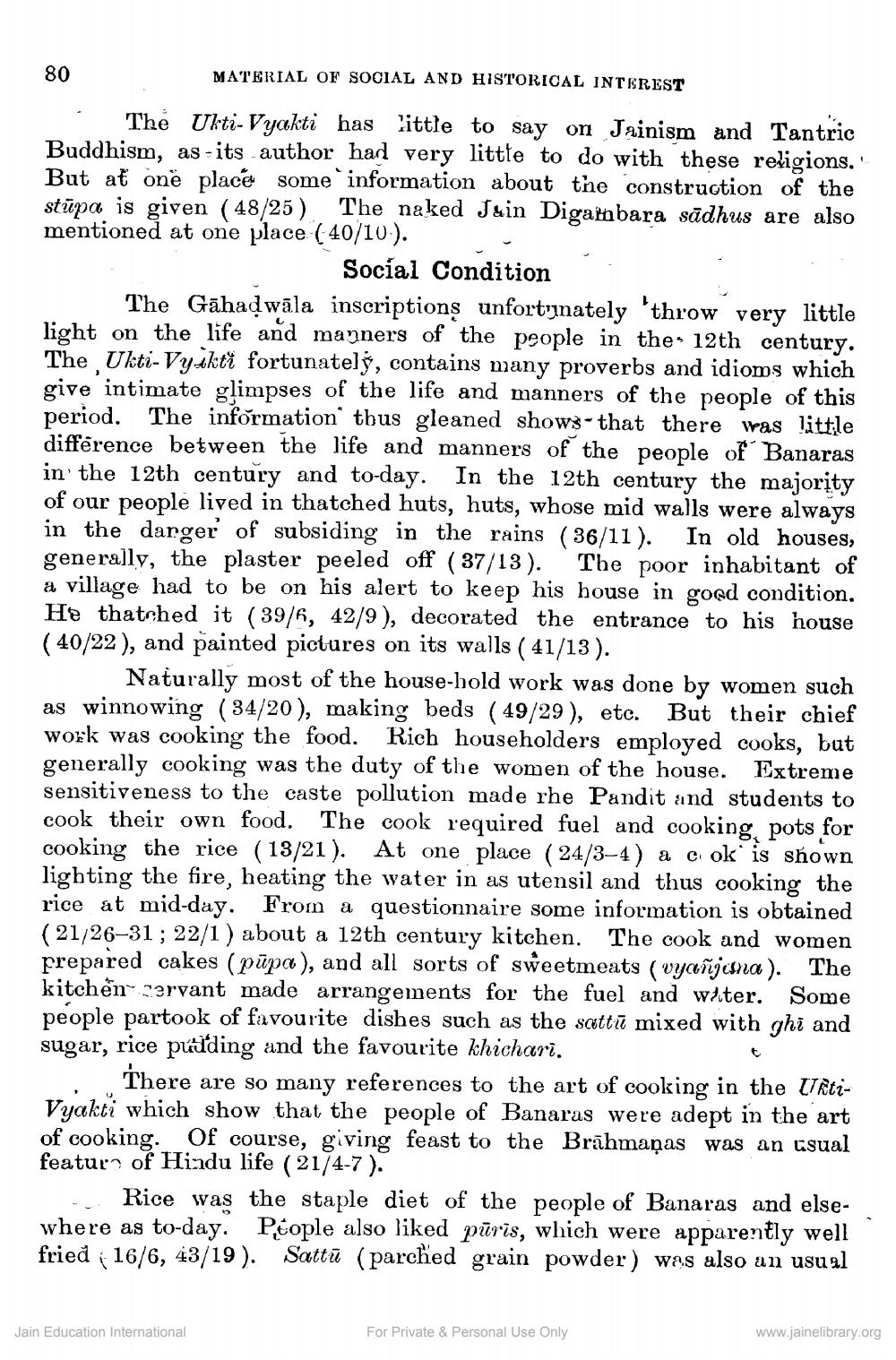________________
80
MATERIAL OF SOCIAL AND HISTORICAL INTEREST The Ukti-Vyakti has 'ittle to say on Jainism and Tantric Buddhism, as - its -author had very little to do with these religions." But at one place some information about the construction of the stūpa is given (48/25) The naked Juin Digarnbara sādhus are also mentioned at one place ( 40/10).
Social Condition The Gāhadwāla inscriptions unfortınately 'throw very little light on the life and manners of the people in the 12th century. The Ukti-Vy,kti fortunately, contains many proverbs and idioms which give intimate glimpses of the life and manners of the people of this period. The information thus gleaned shows that there was little différence between the life and manners of the people of Banaras in the 12th century and to-day. In the 12th century the majority of our people lived in thatched huts, huts, whose mid walls were always in the darger of subsiding in the rains (36/11). In old houses, generally, the plaster peeled off ( 37/13). The poor inhabitant of a village had to be on his alert to keep his house in good condition. He thatched it (39/6, 42/9), decorated the entrance to his house ( 40/22), and painted pictures on its walls ( 41/13).
Naturally most of the house-hold work was done by women such as winnowing (34/20), making beds ( 49/29), etc. But their chief work was cooking the food. Rich householders employed cooks, but generally cooking was the duty of the women of the house. Extreme
ss to the caste pollution made rhe Pandit and students to cook their own food. The cook required fuel and cooking, pots for cooking the rice (13/21). At one place ( 24/3-4) a cok is shown lighting the fire, heating the water in as utensil and thus cooking the rice at mid-day. From a questionnaire some information is obtained (21/26-31 ; 22/1 ) about a 12th century kitchen. The cook and women prepared cakes (pūpa), and all sorts of sweetmeats (vyañjana). The kitchen servant made arrangements for the fuel and whiter. Some people partook of favourite dishes such as the sottu mixed with ghi and sugar, rice puiding and the favourite khichari.
There are so many references to the art of cooking in the UrtiVyakti which show that the people of Banaras were adept in the art of cooking. Of course, giving feast to the Brāhmaṇas was an usual featur? of Hindu life (2174-7).
- Rice was the staple diet of the people of Banaras and elsewhere as to-day. People also liked pūris, which were apparently well fried (16/6, 43/19). Sattū (parched grain powder) was also an usual
Jain Education International
For Private & Personal Use Only
www.jainelibrary.org




